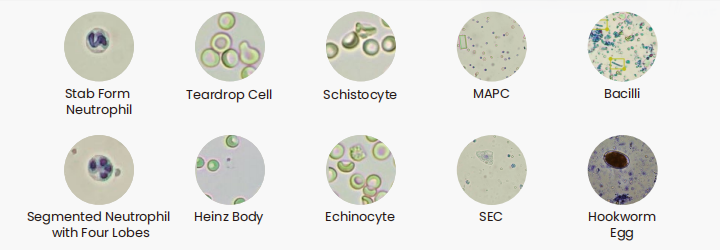Blood test is a fundamental diagnostic tool that provides critical insights into your overall health by analyzing the quantity and quality of blood cells. This test categorizes white blood cells (WBCs) into five subtypes—neutrophils, lymphocytes, monocytes, eosinophils, and basophils—offering a more detailed picture than traditional three-part tests.
WBCs are crucial for fighting infections and immune responses. The total WBC count and its subtypes are essential for detecting infections, inflammation, or blood disorders.
Total WBC Count:
Normal Range: Adults: 4–10 × 10⁹/L; Children: 5–12 × 10⁹/L
Elevated Levels: May indicate bacterial infections, inflammation, leukemia, or stress (e.g., pregnancy, intense exercise)
Low Levels: Suggests viral infections (e.g., influenza), autoimmune diseases, bone marrow disorders, or side effects of medications (e.g., chemotherapy)
Neutrophils:
Key Role: Combat bacterial infections.
Elevated: Bacterial infections, tissue injury, or chronic inflammation
Low: May signal severe infections (e.g., typhoid), autoimmune diseases, or vitamin B12 deficiency
Lymphocytes:
Key Role: Fight viral infections and regulate immunity.
Elevated: Viral infections (e.g., measles), tuberculosis, or Lymphocytic leukemia
Low: Associated with immunosuppression, radiation exposure, or severe bacterial infections
Eosinophils:
Key Role: Involved in allergic reactions and parasitic infections.
Elevated: Allergies (e.g., asthma), parasitic infections, or certain cancers
Basophils:
Key Role: Mediate allergic and inflammatory responses.
Elevated: Rare but seen in chronic myeloid leukemia or hypersensitivity reactions
Monocytes:
Key Role: Clean up cellular debris and combat chronic infections.
Elevated: Chronic infections (e.g., tuberculosis), autoimmune disorders, or certain cancers
Elevated WBC levels under normal, non-pathological conditions are often transient and reversible. Key factors include:
Physical exertion: Intense exercise, heavy labor, or prolonged physical activity
Pregnancy and childbirth: Elevated levels during late pregnancy, labor, and the postpartum period
Emotional stress: Anxiety, fear, or extreme emotional fluctuations
Environmental stimuli: Exposure to extreme temperatures (heat or cold), cold/hot showers, or ultraviolet (UV) light
Dietary and lifestyle factors: Overeating, smoking, or circadian rhythm variations (e.g., higher levels in the afternoon)
Physiological states: Menstruation, ovulation, or recovery from prolonged fasting
These increases are temporary and normalize once the triggering factors subside, as they stimulate adrenaline release or redistribute WBCs from marginal pools into circulation
Physiological reductions in WBCs are less common and typically involve natural fluctuations rather than pathological processes:
Circadian rhythm: Lower counts in the early morning or during rest
Individual variability: Normal baseline variations among healthy individuals
Adaptive responses: Brief dips after mild stressors resolve (e.g., short-term fasting)
Unlike pathological causes (e.g., infections or bone marrow disorders), physiological decreases are mild, transient, and rarely require intervention. However, persistent or significant drops warrant medical evaluation to exclude underlying conditions.

Ozelle‘s products refers to the integration of artificial intelligence (AI) technologies with the study of cell morphology to enhance the analysis, classification, and interpretation of cellular structures. We can clearly see the images of cells in the report produced by Ozelle. By leveraging AI algorithms, particularly machine learning and deep learning, this approach automates and improves the accuracy of identifying and analyzing cell shapes, sizes, and other morphological features.

Compared to traditional testing principle, image-based methods can detect changes in cell morphology and identify abnormal or rare blood cells. It can reveal other blood components, such as platelet aggregates or cellular debris, aiding in the diagnosis of conditions like thrombosis or hemolysis. Moreover, The use of AI models trained millions of times ensures the accuracy of recognition.

Tel: +86 13715308717
Email: [email protected]
R&D Office: BEESKOWER STRABE 4 IN 15234 FRANKFURT, GERMANY
Sales Office: 3104, Shinning Tower, Abu Dhabi
Marketing Center: 3506, Building C, Huanzhi Center,Longhua District, Shenzhen, 518109, China
Manufacturing Center: Country Garden Wisdom Garden,Yuelu District, Changsha, Hunan,China